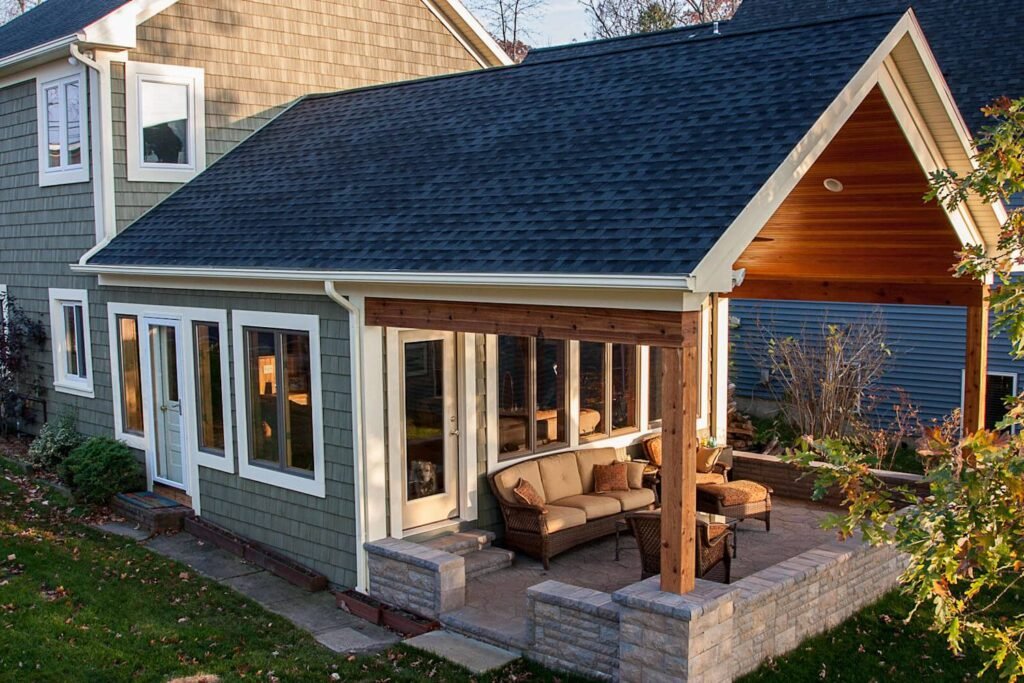Home additions are a smart and strategic way to expand living space, increase functionality, and boost property value. Whether you’re adding a new bedroom, expanding your kitchen, or converting a basement into a functional living area, home additions offer endless possibilities. In this guide, we’ll explore different types of home additions, their benefits, how to plan your project, and why choosing quality materials like Forevermark Cabinetry can make a difference.
Types of Home Additions
1. Room Addition (Bump-Out)
A room addition, also known as a bump-out, involves extending an existing space or adding a completely new room to your home. This is perfect for homeowners looking to create additional living space without a complete overhaul of their property.
Key Benefits:
- Ideal for creating a home office, guest room, or larger living area
- More affordable than extensive renovations
- Can be tailored to fit specific needs
2. Sunroom Addition
A sunroom is a glass-enclosed space designed to let in natural light, providing a relaxing area for leisure or entertaining guests. Sunrooms enhance the home’s aesthetic appeal and allow for year-round enjoyment.
Key Benefits:
- Offers a bright and inviting atmosphere
- Great for plant lovers and relaxation
- Can be used as an additional dining or lounge space
3. Garage Conversion
Converting an existing garage into a livable space is an excellent way to increase your home’s square footage. This addition is perfect for those who do not use their garage for car storage.
Key Benefits:
- Can be transformed into a guest suite, gym, or rental unit
- Maximizes unused space without adding to the home’s footprint
- Cost-effective compared to new construction
4. Second Story Addition
For homes with limited yard space, building a second story is a great way to expand living areas without sacrificing outdoor space. This is especially useful for growing families who need extra bedrooms and bathrooms.
Key Benefits:
- Effectively doubles living space
- Enhances property value significantly
- Allows for better utilization of lot space
5. In-Law Suite Addition
An in-law suite is a self-contained living space within or attached to a home. These suites typically include a bedroom, bathroom, kitchenette, and living area, offering privacy for extended family members.
Key Benefits:
- Perfect for multi-generational living
- Can be used as a rental unit for additional income
- Provides privacy and independence for occupants
6. Kitchen Expansion
Expanding the kitchen improves functionality and accommodates modern lifestyle demands. This addition might involve extending the space to include an island, extra storage, or a dining area.
Key Benefits:
- Improves kitchen workflow and storage
- Creates a better space for cooking and entertaining
- Enhances home resale value
7. Basement Conversion
Transforming an unfinished basement into a functional living area is a cost-effective way to add space without modifying the home’s exterior.
Key Benefits:
- Can serve as a home theater, gym, or additional bedrooms
- Increases usable square footage
- Adds significant value to the property
Planning a Home Addition
Assessing Needs and Goals
Before starting a home addition project, it’s essential to identify your goals. Ask yourself:
- What purpose will the new space serve?
- How will it integrate with the existing home layout?
- What is the estimated budget?
Budgeting and Financing
Home additions vary in cost depending on size, materials, and labor. Consider financing options such as home equity loans, personal loans, or refinancing to support your project.
Hiring Professionals
Working with experienced architects, contractors, and designers ensures that your addition meets safety codes, blends seamlessly with your existing home, and is completed efficiently.
Choosing Quality Materials: Forevermark Cabinetry
Why Forevermark Cabinetry?
When planning a home addition, selecting durable and stylish cabinetry is crucial, especially for kitchens, bathrooms, and storage spaces. Forevermark Cabinetry stands out due to its high quality, sustainability, and affordability.
Key Features:
- Superior Construction: Sturdy wood materials with high-quality hardware
- Durable Finishes: Resistant to wear and tear, ensuring long-lasting use
- Sustainability: Eco-friendly options with responsible sourcing
Where to Use Forevermark Cabinetry?
- Kitchen Expansions: Maximizes storage and enhances aesthetic appeal
- Basement Conversions: Provides organized and functional storage solutions
- In-Law Suites: Adds stylish and practical cabinetry for independent living spaces
Frequently Asked Questions (FAQs)
Q: How long does a home addition project typically take? A: The timeline depends on the project’s complexity. Small additions may take a few weeks, while larger renovations could take several months.
Q: Do home additions require permits? A: Yes, most home additions require permits. It’s best to consult with a professional to ensure compliance with local regulations.
Q: Can I live in my home during the addition process? A: In most cases, yes. However, extensive renovations may require temporary relocation.
Q: How can I maximize my return on investment (ROI)? A: Choosing high-quality materials, hiring reputable contractors, and ensuring the addition complements the existing home can significantly boost ROI.
Conclusion
Home additions are an excellent way to enhance space, improve functionality, and increase property value. Whether you’re considering a simple bump-out or a full second-story addition, proper planning, budgeting, and material selection are key to a successful project. Choosing quality materials like Forevermark Cabinetry ensures your investment lasts for years to come. If you’re ready to start your home addition journey, consult with professionals to bring your vision to life!


